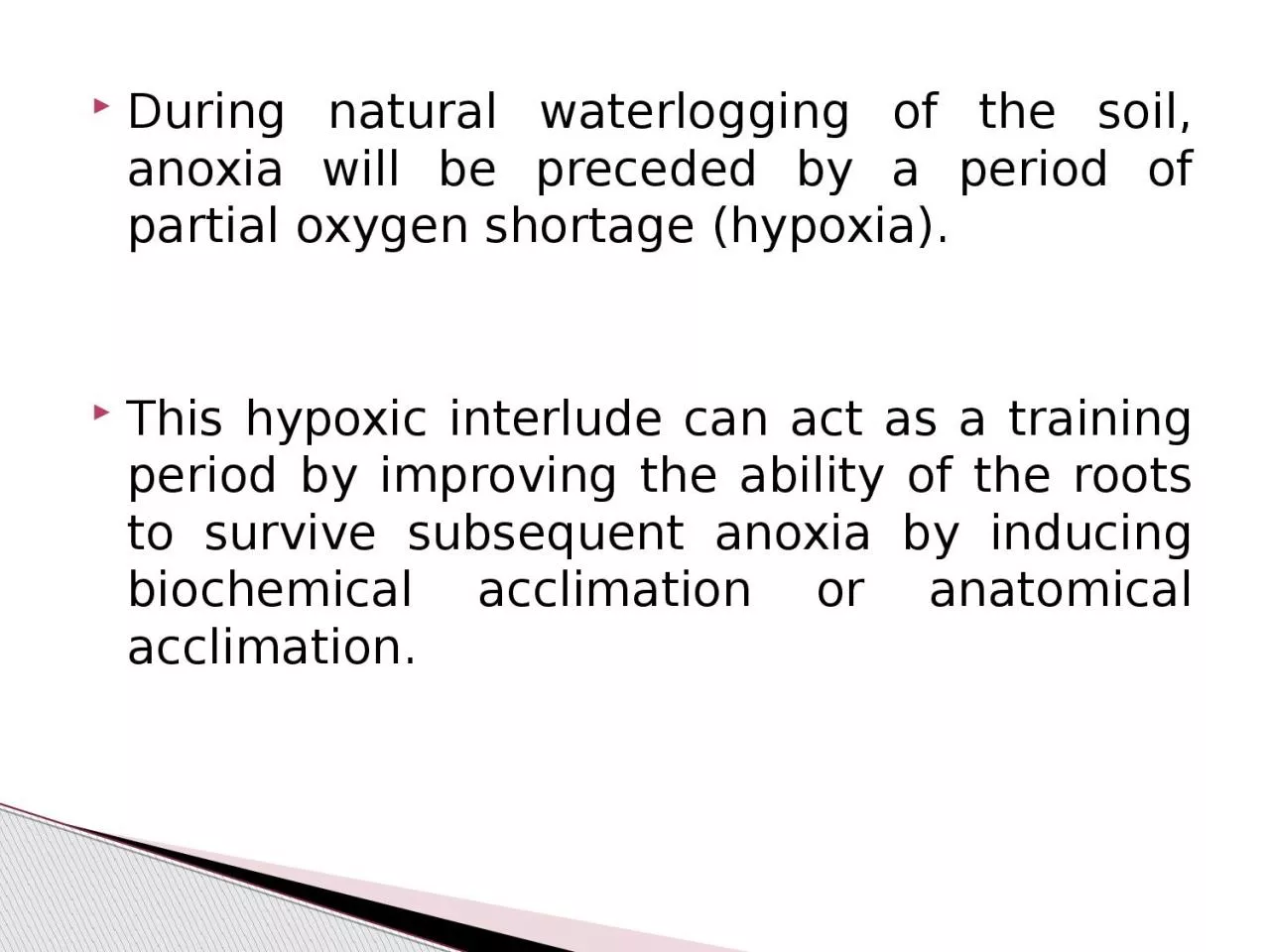

of the soil anoxia will be preceded by a period of partial oxygen shortage hypoxia This hypoxic interlude can act as a training period by improving the ability of the roots to survive subsequent anoxia by inducing biochemical acclimation or anatomical acclimation ID: 1036279
Download Presentation The PPT/PDF document "During natural waterlogging" is the property of its rightful owner. Permission is granted to download and print the materials on this web site for personal, non-commercial use only, and to display it on your personal computer provided you do not modify the materials and that you retain all copyright notices contained in the materials. By downloading content from our website, you accept the terms of this agreement.
1. During natural waterlogging of the soil, anoxia will be preceded by a period of partial oxygen shortage (hypoxia). This hypoxic interlude can act as a training period by improving the ability of the roots to survive subsequent anoxia by inducing biochemical acclimation or anatomical acclimation.
2. As little as 6 h prior exposure to partial oxygen shortage (typically 3 - 5 %, v/v in the gas phase) can lengthen survival time of anoxic maize root tips from 8 h to 72 h.\Sensing mechanism not clear.One possibility is that sensing works through a binding of oxygen to non-leguminous haemoglobin, which is ubiquitous in plants.(this mechanism has been ruled out) Despite this, haemoglobin is undoubtedly important for anoxia tolerance in other as yet undiscovered ways. Biochemical acclimation
3. transcription factors (e.g., Myb factors, G-box factors, 14-3-3 proteins) that bind to promoter regions of target genes and influence expression of HIPs. Promoters=anaerobic response element’ characterized by a GT/GC-rich motif
4. Kinds of HIPs
5. Expression of HIP genes and production of survival protein is complimented by a co-ordinated down-regulation of demand both for oxygen respirable substrates and for ATP. This suppression of demand is instigated by modest decreases in oxygen supply and well in advance of the onset of fermentation or any increase in NADH relative to oxidized NAD+
6. large interconnected intercellular gas-filled spaces that often extend from the shoots to near the root tip A feature shared by most although not all species that grow well in wet places.The spaces are created by cell separations resulting from differential rates of division or expansion by neighbouring cells or from the death of certain cells. Anatomical acclimation through aerenchyma formation
7. Tests with wheat plants have shown that, without aerenchyma, roots longer than 100 mm are fatally damaged by an O2-free medium while roots of this length equipped with 12 % porosity continue elongating.Any oxygen leaking radially out of the roots into the anaerobic soil can oxidise the rhizosphere thus decreasing injury from chemically reduced toxins such as ferrous ions.
8. A BScanning electron micrograph:sections through roots of maize, showing changes in structure with oxygen supply. (150×) (A) Control root, supplied with air, with intact cortical cells. (B) Oxygen-deficient root growing in a nonaerated nutrient solution.
9. Summary of possible stages in aerenchyma formation